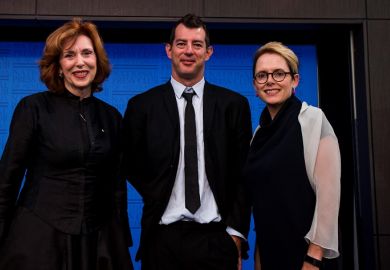Participation in Australian tertiary education is set to plunge, robbing the country of skills to fuel a knowledge economy, researchers have warned.
Academics at Victoria University’s Mitchell Institute say that years of gains in the population’s education profile will be erased by sputtering growth in higher education and a catastrophic decline in vocational education and training (VET).
Their new report shows that if enrolment patterns of recent years continue until 2031, the country will be more than half a million students short of the number required to maintain the current tertiary enrolment rate of about 9 per cent of the adult population.
But the reality is more alarming, because the federal government’s December move to freeze university teaching grants means that higher education can no longer compensate for the plunging numbers in VET.
Consequently, by 2031, Australia will have 760,000 fewer students than it needs to maintain the enrolment rate, which will have tumbled to about 6 per cent of the adult population.
The report is based on projections of publicly funded enrolments and participation. Lead author Peter Noonan said that the findings spelled disaster for the country’s labour market and society.
He cited government forecasts that of almost 950,000 new jobs expected to be created within five years, 90 per cent would require tertiary qualifications. “Without comprehensive, considered policies that support both VET and higher education, we face a real danger of having fewer working-age Australians contributing to our economy,” he said.
“The flow-on effects could impact communities around the country, especially as the cost of supporting our ageing population grows.”
Professor Noonan worked with former education minister John Dawkins to expand Australian higher education in the 1980s. He was also a panel member of the 2008 Bradley Review, which recommended the uncapping of higher education funding, further boosting participation.
He said that policy debates in higher education had been dominated by issues such as financing mechanisms, course eligibility, fee deregulation and performance funding.
“Sitting behind that is a much bigger picture,” Professor Noonan added. “There’s not enough focus on the capacity we need to accommodate population growth over the next 10 years. What’s the balance between the two sectors, and how do we ensure we can sustain growth in participation? Just maintaining participation rates requires a lot of extra enrolments.”
Professor Noonan said that the government deserved credit for including population growth in future funding settings, unlike in the 1990s when participation had fallen. After 2019, when the current freeze ends, the government will, it has pledged, raise teaching grants in line with growth in the adult population.
But this will not be enough to absorb students deserting the VET sector, which has been devastated by state government funding cuts and poaching from the comparatively well-funded higher education system. There is also a question over whether the funding growth will be sufficient to accommodate a looming spike in the number of school-leavers – the result of a “baby bonus” incentive payment to parents in the early 2000s.
Professor Noonan scorned claims that Australia’s participation rate was already too high. He said that warnings of a “massive oversupply” of teaching students two years ago had given way to panic about inadequate student numbers now.
“People look at the here and now and don’t think about demography,” he added. “You need to take a long-term view of the labour market, not just what’s happening next month or next year.”
Register to continue
Why register?
- Registration is free and only takes a moment
- Once registered, you can read 3 articles a month
- Sign up for our newsletter
Subscribe
Or subscribe for unlimited access to:
- Unlimited access to news, views, insights & reviews
- Digital editions
- Digital access to THE’s university and college rankings analysis
Already registered or a current subscriber?







